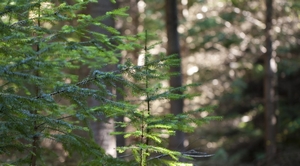Matching science with Maori aspirations
 The conclusion of the Waitangi Treaty settlements will see approximately 40 per cent of New Zealand’s planted forests owned by Māori. This provides the opportunity for Māori to contribute significantly to the national economy through forestry.
The conclusion of the Waitangi Treaty settlements will see approximately 40 per cent of New Zealand’s planted forests owned by Māori. This provides the opportunity for Māori to contribute significantly to the national economy through forestry.
It may also herald an evolution from current plantation forestry practice into one that aligns to the social and cultural needs of Māori, providing them the ability to determine their future through a long-term inter-generational approach to land and forest management. What is needed in the interim is a period of relationship building between industry and Māori that will allow for the exchange of science and technology with that of understanding Māori’s aspiration for their land.
Scion has a strategy in place to help Māori grow their cultural, social and economic wealth through forestry and the sustainable use of their land.
“Our relationship with Māori land owners begins before any research or investment proposal is put forward,” says Russell Burton, who overseas Scion’s Māori research and investment strategy. “This allows each party to gain an appreciation of each other’s
aspirations and objectives. These dialogues will open the door for business opportunities. Māori are preparing to become active participants rather than just landlords, and we can help with that.”
Much of Māori-owned land is presently leased to forest growers. Once harvested, Māori will decide what to do with their land that will provide a return on investment, employment and the opportunity to reinvest in their land while retaining environmental
and cultural values.
An example of this is Scion’s work with Te Tai Tokerau Forestry Innovation in Northland, to enhance the value of their land and generate employment through a forestry-based infrastructure. The inclusion of iconic native species, such as kauri and totara, will be an important element of the project.
It’s a bigger picture than just trees, Greg Steward, Scion’s technical officer and manager for alternative species explains. “For Māori, forestry is not just about pine trees; it’s about other tree species, water, the land, jobs. Whatever is done with the land needs to fit with their cultural and spiritual values, to re-establish roles for indigenous species, and to make good use of the land through multi-use forests, such as mixed plantings with under-cropping for early cashflow. There is also the opportunity in parts of the central North Island to utilise the geothermal energy to power wood processing industries.”
Māori are key stakeholders in the future of forestry; the decisions they make will help shape the future of the country’s bio-economy. The bigger picture here includes such things as bio-refineries and the processing of woody biomass into bio-plastics and bio-fuels. In the central North Island, these can be powered by the untapped geothermal activity that abounds. Underscored by Scion’s forestry science and technology, this has considerable potential for re-investment in the region, the land and importantly, the people.
